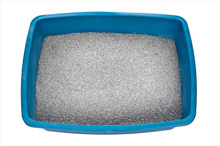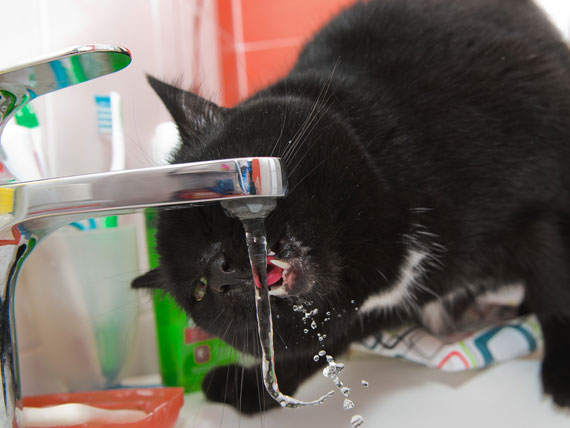

By Vanessa Voltolina
You’re scanning pet food labels and come across ingredients such as “chicken meal,” “pea fiber” and “rice.” Still, you may be wondering if all of these ingredients are present in the ideal amounts in this food to provide your pet the nutrients it needs to live a long, healthy life.
While yes, the ingredient list for pet food is important, just as vital are the nutrients provided by these ingredients. “All animals need water, energy — from protein, fat, or carbohydrates — essential fatty acids, vitamins, and minerals,” says Tony Buffington, DVM, PhD, and Professor of Veterinary Clinical Sciences at The Ohio State University Veterinary Medical Center. “The nutrient needs of pets are met by nutritionists and food scientists employed by companies that make pet foods.”
Dr. Buffington goes on to explain that animals have nutrient — not ingredient — requirements. As long as all nutrients are present in appropriate amounts for your pet — in proper balance, and available for absorption in sufficient quantities (which can’t be determined from reading the label) — he believes that the source is irrelevant to the health of the pet.
Take protein, for example. Dogs and cats need protein in their diet to meet their requirements for essential amino acids (the amino acid requirement for cats is higher than for dogs). However, once those requirements are met, additional protein beyond what the pet can use for energy is excreted. A dog’s or cat’s energy requirements can also be met by carbohydrates and has the added benefit of controlling excessive levels of minerals or other nutrients which are not optimal for a pet's health.
“Balance is important because of metabolism,” says Dr. Bartges. “If you don't eat a lot of carbohydrates and eat more protein, some of the protein has to be used for glucose production for energy. It is this balance which leads to efficiency [when eating].”
Since pet food is formulated to be the sole source of your furry friend’s nutrition, it’s the ingredient ratios, says Dr. Bartges, which, when done correctly, make a diet complete and balanced. “If an essential amino acid is low in one ingredient, [pet food companies] can add another ingredient higher in that essential amino acid,” he says.
Of course, too much of a good thing can have the opposite effect. For example, vitamin D in appropriate levels of intake is important for pets, says Dr. Bartges, but too much vitamin D may lead to high blood calcium levels. Sodium (salt) and protein are also similar in this way. Each is necessary for your pet but must be provided at appropriate dietary levels. Too much protein and the excess phosphorus may exacerbate kidney issues; too little and your pet may have issues with growth and development, among other things. This need for balance is essential in all your pet's dietary nutrients, and is the reason why reputable pet food companies hire trained veterinary nutritionists to select ingredients carefully. The pet nutritionists must properly balance key ingredients (sometimes numbering more than 50 ingredients) and precisely balance individual nutrients and minerals to provide a pet with optimal health.
As you browse the pet aisles, you’ll see pet foods formulated for various life stages. You may be wondering, how, exactly, these foods are formulated to meet your pet’s needs, and whether or not you should heed the package labels.
In general, dogs and cats have many of the same nutritional needs during specific life stages, says Dr. Bartges. Puppies and kittens require diets higher in protein and calories (unless a large or giant breed dog), and more calcium than adults to promote growth (without consuming excess). For grown pets, no one nutrient is the star, since adult pets need a complete and balanced diet, adds Dr. Bartges.
“All life stage” pet food — which is formulated to meet the nutritional levels established by the AAFCO Pet Food Nutrient Profiles for growth — may seem like a great idea for pets of all ages; however, some adult or senior pets may inadvertently receive certain excess nutrients that could result in health concerns. But, says Dr. Buffington, “this could be true for any food fed to an animal with an undiagnosed condition. The nutrient content of some senior diets overlap with that of some ‘all life stage’ diets and with some growth foods, too.”
Additionally, you may be tempted to feed your kittens and puppies “all life stage” pet food, especially if you’re already giving this to your adult pets. However, this may result in unforeseen issues as well. Since “all life stage” pet foods must meet or exceed requirements for growth, it is best to seek expert advice from someone who knows your pet’s nutritional and healthcare needs.
It's easy to feel overwhelmed with so many different pet foods to choose from. Take out the guesswork and discuss it with your veterinarian. He or she can help you make the right decision about what type of pet food is best based on your pet’s individual health, life stage and nutritional requirements.
 How Do Cats Show Love? Let Us Count Six Ways
By Cheryl Lock
They’re known for
How Do Cats Show Love? Let Us Count Six Ways
By Cheryl Lock
They’re known for
 Are You the Cause of Your Cat’s Stress?
Strange as it may sound, a stressed cat is no
Are You the Cause of Your Cat’s Stress?
Strange as it may sound, a stressed cat is no
 Best Ways to Introduce a New Kitten to Your Home
Your life with your new kitten begins on the r
Best Ways to Introduce a New Kitten to Your Home
Your life with your new kitten begins on the r
 Cleaning Litter Boxes & Trays - Step By Step Guide
Cleaning Litter Boxes & Trays - Step By Step Guide Daily
Cleaning Litter Boxes & Trays - Step By Step Guide
Cleaning Litter Boxes & Trays - Step By Step Guide Daily
 How Drinking Water Could Save Your Cat's Bladder
Why Your Cat Needs to Drink More
How Drinking Water Could Save Your Cat's Bladder
Why Your Cat Needs to Drink More
Copyright © 2005-2016 Pet Information All Rights Reserved
Contact us: www162date@outlook.com